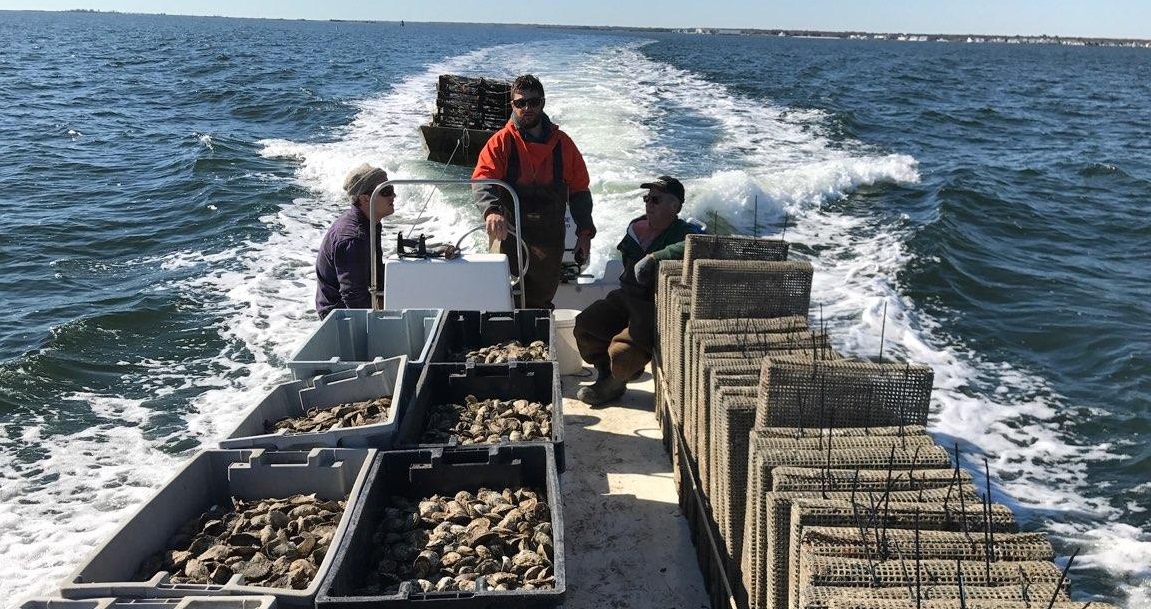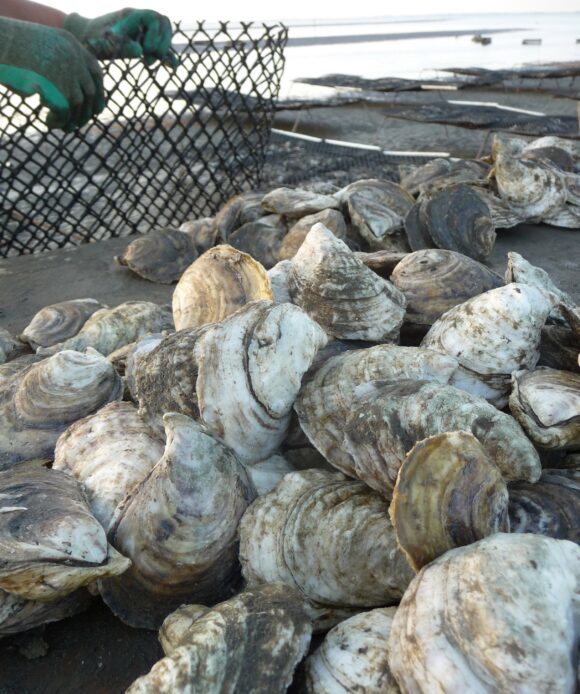
Transporting harvest from Barnegat Bay oyster farm. Photo: Barnegat Bay Collective.
Like many sectors in the global economy, the shellfish aquaculture industry has suffered significant economic decline especially as shellfish farmers rely on direct sales to restaurants or on wholesale markets that ultimately serve restaurants.
As the COVID-19 pandemic shuttered restaurants across the U.S., a critical link in the shellfish aquaculture supply chain was lost. This disruption in demand not only led to diminished farm revenues but also created significant disruption in management of oyster stock as oysters that were bound for spring and summer harvests remained on the farm for a longer term than anticipated.
Lisa Calvo, aquaculture program coordinator at Rutgers and New Jersey Sea Grant, explains the consequences of this unprecedented disruption in the chain. “Oyster farmers have been unable to cycle gear and free up space to accommodate the growth of a next generation of submarket oysters, and in the meanwhile many of the oysters have outgrown the preferred raw bar cocktail size.”
While some farmers have had success establishing alternate markets through shucking houses, on-line sales, and other direct to consumer opportunities, sales have still not rebounded to pre-pandemic levels.
But as Calvo explains, “fortunately, the oyster holds value beyond the raw bar.”

Farm-raised oysters ready for harvest at Delaware Bay oyster farm. Photo: Lisa Calvo.
Oysters are considered to be tremendously beneficial to the environment, serving as habitat for a suite of commercially and recreationally important finfish as well as improving water quality and sequestering nitrogen and carbon. These ecosystem services are essential to the health of bay environments and underscore oyster habitat enhancement and restoration as a pressing goal worldwide.
In New Jersey, funding from a special NOAA Sea Grant COVID-19 Rapid Response Aquaculture Funding Opportunity allows for the purchase of 76,000 of these oversized, farm-raised oysters directly from oyster farmers for the purpose of restoring habitats.
The grant brings together a collaborative partnership of scientists, extension specialist, state resource managers, environmental non-profits and shellfish farmers with Rutgers University and New Jersey Sea Grant taking the lead alongside partners that include New Jersey Department of Environmental Protection, Stockton University, Barnegat Bay Partnership, Partnership for the Delaware Estuary, The Pew Charitable Trust and the New Jersey Aquaculture Association.
The oysters will be transplanted from farms to targeted restoration sites in the Little Egg Harbor and Mullica River this September. The overgrown oysters will provide an ecological jumpstart that might otherwise take years to achieve using traditional oyster restoration practices, which rely on shell recycling and natural recruitment of oysters.
Calvo, who leads the project, hopes the project will serve as a model for future efforts. The intent is to establish a shellfish exchange that will serve as a broker to link shellfish farmers and restoration practitioners.
“Such collaboration will make an already green aquaculture industry all the more environmentally beneficial,” she explains, as this approach not only provides environmental benefit but provides an opportunity for shellfish farmers to diversify their businesses supporting a sustainable and healthy future for Bayshore ecosystems and economies.

